-
 Bitcoin
Bitcoin $117700
-1.00% -
 Ethereum
Ethereum $4458
-3.91% -
 XRP
XRP $3.119
0.14% -
 Tether USDt
Tether USDt $1.001
-0.02% -
 BNB
BNB $836.6
-1.56% -
 Solana
Solana $189.5
-3.90% -
 USDC
USDC $0.9998
-0.02% -
 Dogecoin
Dogecoin $0.2335
1.29% -
 Cardano
Cardano $0.9642
1.51% -
 TRON
TRON $0.3539
-1.19% -
 Hyperliquid
Hyperliquid $47.41
-1.84% -
 Chainlink
Chainlink $21.92
-3.28% -
 Stellar
Stellar $0.4286
-0.23% -
 Sui
Sui $3.724
-3.29% -
 Bitcoin Cash
Bitcoin Cash $594.8
-0.78% -
 Ethena USDe
Ethena USDe $1.001
0.04% -
 Hedera
Hedera $0.2501
-2.06% -
 Avalanche
Avalanche $23.96
-4.87% -
 Litecoin
Litecoin $119.0
-2.32% -
 Toncoin
Toncoin $3.473
0.82% -
 UNUS SED LEO
UNUS SED LEO $9.596
0.17% -
 Shiba Inu
Shiba Inu $0.00001301
-0.39% -
 Uniswap
Uniswap $11.03
-0.25% -
 Polkadot
Polkadot $3.935
-2.62% -
 Dai
Dai $1.000
0.01% -
 Bitget Token
Bitget Token $4.564
-1.76% -
 Cronos
Cronos $0.1512
-4.11% -
 Ethena
Ethena $0.7306
-1.09% -
 Pepe
Pepe $0.00001087
-2.68% -
 Aave
Aave $300.2
-4.00%
The role of staking in token economics? The balance between the income model and network security
Staking is vital for PoS blockchains, balancing income generation and network security, while influencing token economics and decentralization.
May 15, 2025 at 07:56 pm
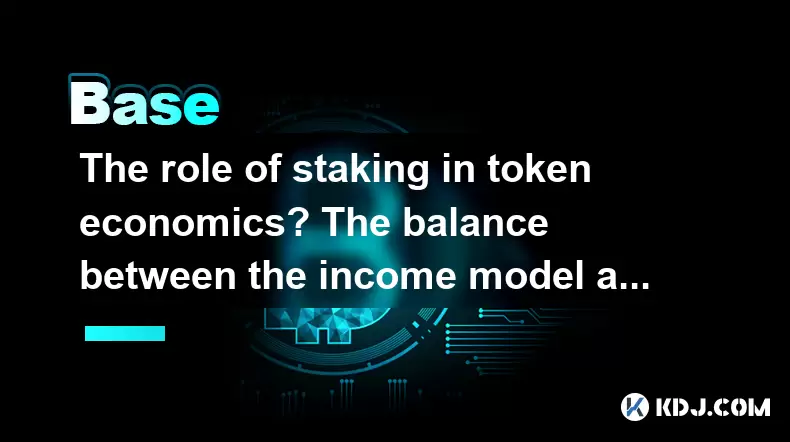
Staking plays a crucial role in the token economics of blockchain networks, particularly those that utilize a Proof of Stake (PoS) or similar consensus mechanisms. This article will delve into the multifaceted role of staking, exploring how it intertwines with both the income model and network security, creating a delicate balance that is essential for the health and sustainability of these ecosystems.
The Basics of Staking
Staking is the process by which participants in a blockchain network lock up a certain amount of their tokens to participate in the validation of transactions and the creation of new blocks. This process is fundamental to networks that employ a PoS or its variants, such as Delegated Proof of Stake (DPoS) or Leased Proof of Stake (LPoS). By staking their tokens, participants contribute to the network's security and, in return, are often rewarded with additional tokens.
In PoS systems, the probability of being chosen to validate a block and earn rewards is typically proportional to the number of tokens staked. This mechanism incentivizes users to hold onto their tokens rather than sell them, which can help stabilize the token's value and reduce market volatility.
Staking as an Income Model
One of the primary attractions of staking for participants is the potential to earn passive income. Staking rewards serve as a significant income model for token holders, offering a way to generate returns on their cryptocurrency holdings without the need to sell them.
The income generated from staking can vary widely depending on several factors, including the network's inflation rate, the total amount of tokens staked, and the specific reward structure of the blockchain. For instance, a network with a high inflation rate might offer more substantial staking rewards to incentivize participation, but this could also lead to a dilution of the token's value over time.
Balancing Staking Rewards and Token Value
The design of staking rewards must be carefully balanced to ensure that it does not undermine the token's value. If staking rewards are too generous, it could lead to an oversupply of tokens, causing inflation and potentially decreasing the token's value. Conversely, if rewards are too low, participants might be less inclined to stake their tokens, which could compromise network security.
Network designers often implement mechanisms such as slashing, where stakers can lose a portion of their staked tokens for malicious behavior, or lock-up periods, where staked tokens are locked for a certain duration, to mitigate these risks. These mechanisms help maintain a balance between incentivizing participation and protecting the token's value.
Staking and Network Security
Staking is not only an income model but also a critical component of network security. By requiring participants to stake their tokens, PoS networks create a financial incentive for validators to act honestly. If a validator attempts to attack the network or validate fraudulent transactions, they risk losing their staked tokens, which serves as a deterrent.
The security of a PoS network is directly tied to the amount of tokens staked. A higher stake means more tokens are at risk, which generally leads to a more secure network. This is because validators with significant stakes are more likely to have their long-term interests aligned with the network's health and security.
The Role of Staking in Decentralization
Staking also plays a role in the decentralization of blockchain networks. By allowing anyone with tokens to participate in the validation process, PoS systems can potentially be more decentralized than Proof of Work (PoW) systems, where participation is often limited to those with significant computational resources.
However, the effectiveness of staking in promoting decentralization depends on the distribution of tokens. If a small number of participants control a large portion of the staked tokens, it could lead to centralization, undermining the network's security and resilience. To address this, some networks implement measures such as caps on the amount of tokens that can be staked by a single entity or incentives for smaller stakers.
Staking Pools and Delegation
To make staking more accessible and to encourage broader participation, many networks offer staking pools or delegation mechanisms. Staking pools allow participants to combine their tokens to increase their chances of being chosen to validate a block and earn rewards. Delegation, on the other hand, allows token holders to lend their tokens to validators, who then stake them on their behalf.
These mechanisms can help democratize staking, making it possible for individuals with smaller amounts of tokens to participate and earn rewards. However, they also introduce new dynamics to consider, such as the trust required between delegators and validators and the potential for centralization if a few large pools or validators dominate the network.
The Impact of Staking on Token Economics
Staking has a profound impact on the overall token economics of a blockchain network. It influences factors such as token supply, demand, and circulation. By locking up tokens in staking, the circulating supply is reduced, which can potentially increase the token's value if demand remains constant or grows.
Additionally, staking can affect the token's utility and governance. In many networks, staked tokens can be used to vote on proposals and influence the direction of the network, giving stakers a say in its development and governance. This can enhance the token's value by aligning the interests of token holders with the network's long-term success.
Frequently Asked Questions
Q: How does staking affect the liquidity of a token?
A: Staking can reduce the liquidity of a token by locking up a portion of the total supply. This can lead to a decrease in the number of tokens available for trading, potentially increasing the token's price if demand remains steady or grows. However, networks often implement mechanisms such as unstaking periods to balance liquidity and security.
Q: Can staking be done on any blockchain?
A: No, staking is specific to blockchains that use a Proof of Stake or similar consensus mechanism. Blockchains that use Proof of Work, such as Bitcoin, do not have a staking mechanism. It's essential to check the consensus mechanism of a blockchain before attempting to stake.
Q: What happens to staked tokens if the network is attacked?
A: In the event of a network attack, staked tokens can be at risk, particularly if the attack involves malicious behavior by validators. Many PoS networks implement slashing mechanisms, where validators who engage in malicious activities can lose a portion or all of their staked tokens. This serves as a deterrent against attacks and helps maintain network security.
Q: How can I start staking on a blockchain network?
A: To start staking, follow these steps:
- Choose a network: Select a blockchain that supports staking, such as Ethereum 2.0, Cardano, or Tezos.
- Acquire tokens: Purchase or acquire the necessary tokens for the chosen network.
- Set up a wallet: Use a compatible wallet that supports staking, such as Ledger, Trezor, or a software wallet like Daedalus for Cardano.
- Stake your tokens: Follow the specific instructions for the network, which may involve transferring tokens to a staking address or using a staking interface provided by the wallet.
- Monitor and manage: Keep an eye on your staking rewards and any updates or changes to the network's staking rules.
Disclaimer:info@kdj.com
The information provided is not trading advice. kdj.com does not assume any responsibility for any investments made based on the information provided in this article. Cryptocurrencies are highly volatile and it is highly recommended that you invest with caution after thorough research!
If you believe that the content used on this website infringes your copyright, please contact us immediately (info@kdj.com) and we will delete it promptly.
- Kazakhstan's Crypto Leap: Bitcoin ETF and Central Asia's Digital Finance Future
- 2025-08-13 12:45:19
- BlockDAG Presale Blazes Past $371M: Fundraising Frenzy Fuels Crypto Sensation
- 2025-08-13 13:05:21
- Meme Coins: Chasing the 2025 Surge – Which Will Moonshot?
- 2025-08-13 10:25:23
- Bitcoin's Wild Ride: Rally, Pullback, and What's Next
- 2025-08-13 10:25:23
- Bitcoin, Bitmax, and Institutional Demand: A New Era of Crypto Investment
- 2025-08-13 10:45:12
- Solana, ROAM, and Airdrops: What's the Buzz in 2025?
- 2025-08-13 11:35:13
Related knowledge
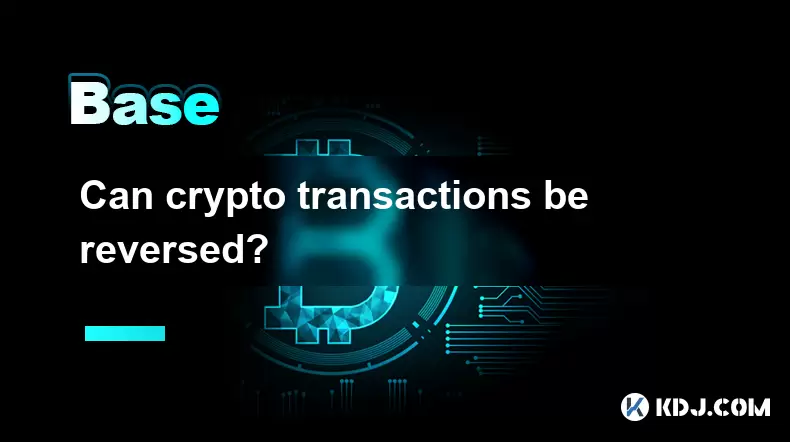
Can crypto transactions be reversed?
Aug 10,2025 at 01:35am
Understanding the Immutability of Blockchain TransactionsCryptocurrency transactions are built on blockchain technology, which is designed to be immut...
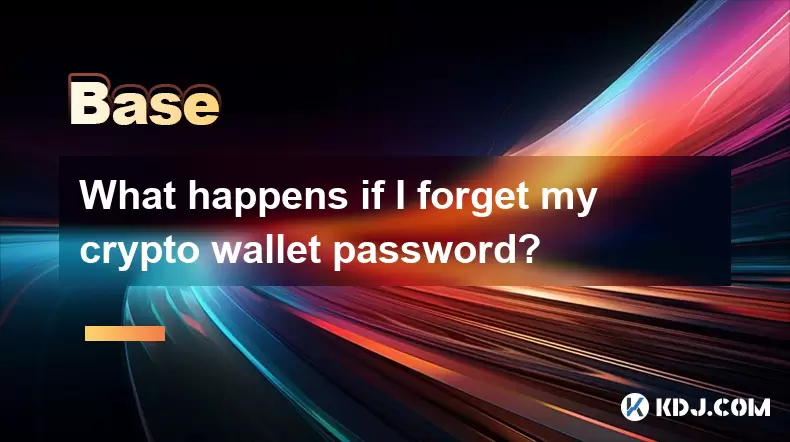
What happens if I forget my crypto wallet password?
Aug 09,2025 at 08:50am
Understanding the Role of a Crypto Wallet PasswordA crypto wallet password serves as a critical security layer that protects access to your digital as...
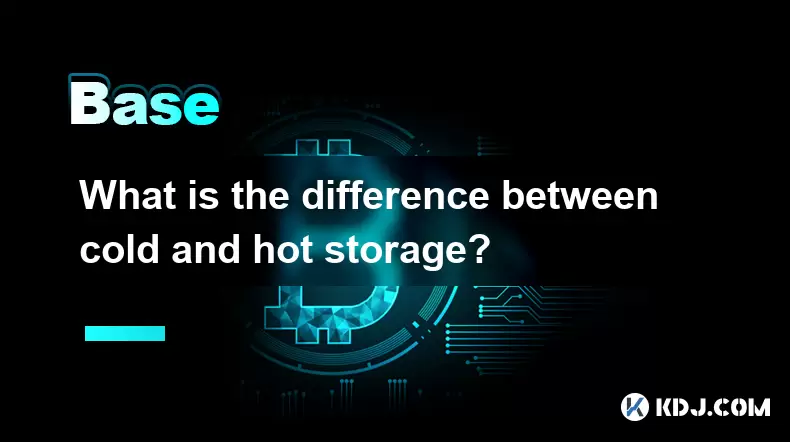
What is the difference between cold and hot storage?
Aug 12,2025 at 01:01am
Understanding Cold Storage in CryptocurrencyCold storage refers to offline methods of storing cryptocurrency private keys, ensuring they are not expos...
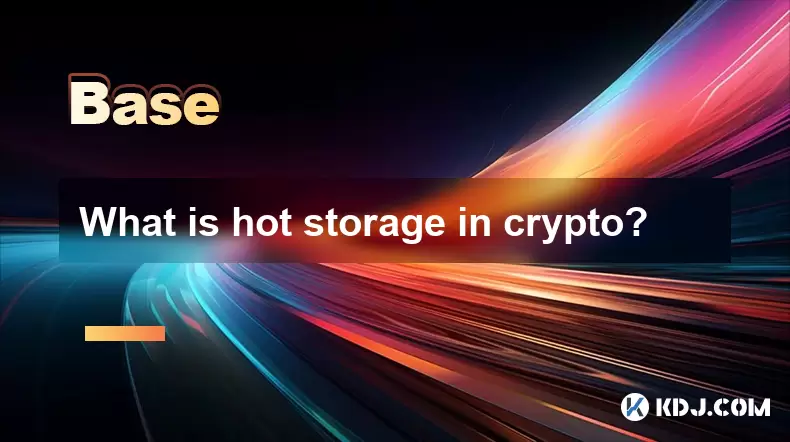
What is hot storage in crypto?
Aug 11,2025 at 07:08am
Understanding Hot Storage in CryptocurrencyHot storage refers to cryptocurrency wallets that are connected to the internet. Unlike cold storage soluti...

What is cold storage in crypto?
Aug 13,2025 at 11:35am
Understanding Cold Storage in CryptocurrencyCold storage in cryptocurrency refers to a method of storing digital assets offline, away from internet-co...
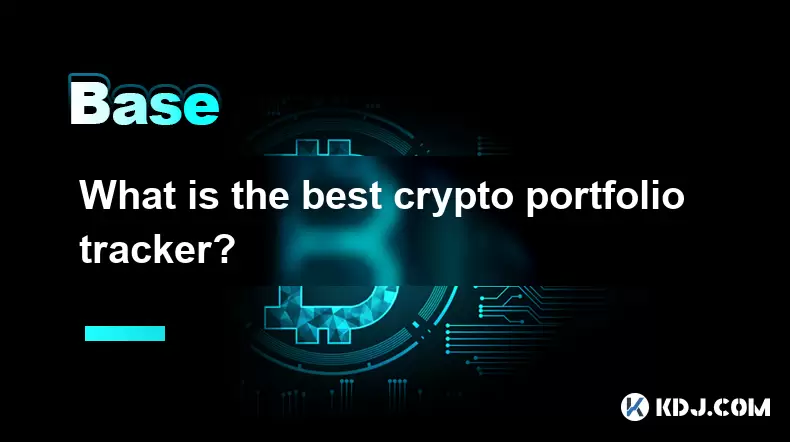
What is the best crypto portfolio tracker?
Aug 10,2025 at 05:08am
Understanding the Role of a Crypto Portfolio TrackerA crypto portfolio tracker is a digital tool designed to help investors monitor the performance of...

Can crypto transactions be reversed?
Aug 10,2025 at 01:35am
Understanding the Immutability of Blockchain TransactionsCryptocurrency transactions are built on blockchain technology, which is designed to be immut...

What happens if I forget my crypto wallet password?
Aug 09,2025 at 08:50am
Understanding the Role of a Crypto Wallet PasswordA crypto wallet password serves as a critical security layer that protects access to your digital as...

What is the difference between cold and hot storage?
Aug 12,2025 at 01:01am
Understanding Cold Storage in CryptocurrencyCold storage refers to offline methods of storing cryptocurrency private keys, ensuring they are not expos...

What is hot storage in crypto?
Aug 11,2025 at 07:08am
Understanding Hot Storage in CryptocurrencyHot storage refers to cryptocurrency wallets that are connected to the internet. Unlike cold storage soluti...

What is cold storage in crypto?
Aug 13,2025 at 11:35am
Understanding Cold Storage in CryptocurrencyCold storage in cryptocurrency refers to a method of storing digital assets offline, away from internet-co...

What is the best crypto portfolio tracker?
Aug 10,2025 at 05:08am
Understanding the Role of a Crypto Portfolio TrackerA crypto portfolio tracker is a digital tool designed to help investors monitor the performance of...
See all articles

























































































